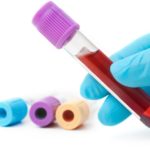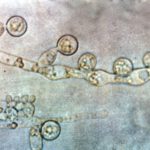This test provides the most comprehensive assessment available for digestive health and is the appropriate choice for patients presenting with sub-optimal gut function, but also anyone experiencing inflammatory symptoms, mood disorders or hormone imbalance. It uses forensic technology to measure:
- digestive, absorption and metabolic markers
- markers of inflammation, including a measurement of increased permeability of the gut lining or ‘leaky gut’
- immune reaction to gluten and a general marker for gut-immune function
- presence of hidden blood or mucous in the stool
- markers relating to liver detoxification of bacterial toxins
- levels of beneficial bacteria and the presence of 35 potentially harmful bacteria including Helicobacter pylori, which can cause stomach ulcers
- presence of yeast, including Candida, Geotrichum and Rhodotorula species
- parasitic or worm infection – checking for 14 different species
How to complete the Complete Microbiome Stool Test
Please read through test kit instructions carefully.
If you have taken antibiotics, anti-fungal medication, or antimicrobials herbs, you must wait a full 2 weeks before testing. Ideally avoid taking probiotic supplements for 1 week and avoid fermented or probiotic foods. 3 days before testing, avoid any over the counter anti-inflammatory medication such as aspirin or ibuprofen, as well as laxatives, digestive enzymes, detox/liver herbs and minerals, amino acids or any other gut-associated supplements.
2 days before testing eat as varied a diet as possible. Make sure you include a variety of protein (e.g. fish, meat or eggs), fats (e.g. salmon, avocado, coconut or olive oil), carbohydrates (e.g. quinoa or rice); and both raw & cooked vegetables over the 2 days prior to completing the sample. You will also need to include gluten in your diet, if you wish to assess for any immune reaction to gluten.
Day of testing. Complete the stool sample any time on a Sunday or Monday. Pass stool into the collection tray without contaminating it with urine.
Use the scoop inside the lid of the pot with a white top (no liquid) to collect samples from different parts of your stool, picking up traces of any blood, mucous or undigested food, if present. The white top pot should be filled 1/2 to 2/3 full, then replace and tighten the lid. Do not discard the remaining stool in the collection tray.
Next, complete the faecal swab. Remove the swab from the peel pouch and be careful not to to touch the cotton tip. Insert the tip of the swab into the stool sample and twist until it is evenly coated, but not overloaded with stool. Place the swab into the vial with an orange lid and mix it around in the liquid, pressing against the side of the vial to help disperse it. Holding the end of the plastic shaft of the swab firmly, place the marked breaking point against the rim of the vial and bend the shaft back to break it. Discard the upper part of the swab shaft, leaving the lower part and tip in the vial, then replace the orange cap and tighten it. Shake the vial until the sample has been thoroughly mixed. Complete your details on the small sticky label and affix it to the side of the orange top vial.
Finally, collect stool into the vial with a green top, which contains red fluid. Again, collect several portions of stool from areas of different colour or texture, adding stool until the fluid reaches the ‘fill line’ indicated on the side. Tick the box on the label to indicate if the stool sample was watery, loose, formed or bloody. You can now discard the remaining stool and collection tray.
Ensure that all collection vials are labelled, place them inside the padded white envelope and then into the resealable section of the specimen transport bag. Keep the three samples in the fridge (not freezer) until ready to be couriered on a Monday.
Please ensure that you enclose the test request form and Gut Health Questionnaire along with your samples, having completed your details and if not already completed, adding in details for Amanda Nutrition.
Please drop the samples at your nearest NZ Couriers depot, which you can find here https://www.nzcextras.co.nz/nearestlocation. Please note that Post Shops will not accept NZ Couriers packages. Ignore the ‘Pre 8am’ sticker on the courier bag, which is just for the courier’s attention. There is no need to be concerned about the courier company refrigerating or freezing the sample while in transit.














